Scouting Carlos Baleba
In-depth analysis on one of the world's best midfield talents—play style, aerial ability, defensive prowess, tempo setting, ball-carrying, agility, ball-striking, weaknesses, and tactical adaptability
Not often does a player come along who makes you go “wow". Even less often is that player a defensive midfielder. But is it even fair to label Baleba as such? Can you really confine a player like him to such a rigid definition?
Cameroon produced a star. France nurtured a boy. England made a man. Football received a gift.
And I, on the other hand, got a DM asking: Who is Carlos Baleba?
🌱 The Early Years
Carlos Noom Quomah Baleba was born on a warm (32.3°C—yes, I checked) January day in Cameroon: "I lived in a hut made of planks... in front of my door, there were truck tyres," azscore reported. "Everything I was given, I put it on. I didn't complain."
Football was always part of his life, but his first taste of competitive action came at Futur Soccer FC. From there, he joined the École de Football des Brasseries du Cameroun academy at 13, where his talent quickly stood out: “They called me Maradona when I played as a [right] winger because I scored a lot from there.”
His time as a winger likely shaped his elite ball-carrying ability. "When I was very much younger, my dad told me that I had to play like Ronaldinho."
But in a world of wingers, his idols were midfielders—Paul Pogba, Kevin De Bruyne, and Thiago Alcântara. “I watched them, I tried to reproduce what they did. I never had another dream than football. Since I was little, I was programmed for this, to become a professional. This is what I like to do. Playing football.”
And then, France came calling. Well, actually, Cameroon’s u17 side did, but COVID saw to the end of that.
🇫🇷 LOSC Lille
"Un box to box gaucher, généreux dans l’effort et doté d’un gros volume de jeu." A left-footed box-to-box midfielder, generous in effort and with a large playing volume.
Baleba’s integration into French football was slow, but time couldn’t contain his talent. He started out with Lille’s reserve team, Lille OSC II, in Championnat National 3, where he made 13 appearances and scored once. Then, as time tends to work, came 2022 and Paulo Fonseca. Baleba started two-thirds of Lille’s pre-season games, playing 183 minutes in total, before making his Ligue 1 debut on the 7th of August 2022, in a 4-1 win over AJ Auxerre.
“Why did you choose LOSC?”
"Because the project that was presented to me was the best for me, for my development." "I watched their matches, I followed their results, I saw their European participations. And then there were players in the team that I wanted to play with, like Nicolas Pépé, Renato Sanches, Jonathan Bamba or Benjamin André, who is a player that I like, who really galvanizes his teammates, who sets the tone and moves the team forward. Renato is also an example for me.”
And the thing is, the role Baleba was tasked with wasn’t one you just take to immediately. Defending with your back to goal (he also played as an AM on occasion), dropping deep to receive the ball… yeah, that’s where mistakes happen. And for an 18-year-old seeing senior football for the first time?
"In Ligue 1, things go faster. In addition, I play in the middle, so if I make a mistake, it goes straight to the goal behind.”
Over the 2022/23 season, he made 19 Ligue 1 appearances for Lille, accumulating just 478 minutes. He held his own in a side that finished 5th, maintaining an 80% long pass completion rate and a 64.3% tackle success rate—most of which came in the middle third.
A year on from his time at Lille, he reflected: “I think I've improved, especially in the defensive and tactical areas. Offensively, I hit, I make passes, I break lines. I've always done that. But defensively, tactically, I can say it, it was rubbish, zero. I've improved in these aspects, but I still have to improve.”
And Brighton saw that there was, in fact, room to improve, because in August 2023, Lille announced that he’d leave for Brighton for a fee of €27 million, joining quite an exciting list of high-money Lille departures:
🕊️ Brighton And Hove Albion
"I feel very happy to be a Premier League player for Brighton; it was a big dream for me. My objective is to help the team be the best they can and to finish in the best position in the table.
And here we are. Born to replace Moisés Caicedo, living to be better than Moisés Caicedo.
“I just work. In my head, it's all about working and helping my club. If I can help a teammate, I will. If they can help me, I'll accept that help to push forward and develop."
He’s been given a platform at Brighton, shaped by two very different tutelages—the disciplined, automated, and protected pivot of Roberto De Zerbi, and the free-flowing, run-where-and-when-you-want, often lone pivot of Fabian Hürzeler. Dribble to a strict pattern vs. hey, you have the ball, you have the talent, you go have fun.
"At the end of my career, I want to have an individual title, to play and mark a little bit of history like the great midfielders have done before. And then win trophies, lots of trophies, with my club and my country."
📖 Player Overview
🤸 Aerial Ability
The 5’10” stature really does undersell him, so let’s get into the aerial stuff.
In 2023/24, Baleba won 72.7% of his aerial duels.
This number fell to 63.8% in 2024/25.
It seems like a big drop, but it really isn’t. He still ranks first in Brighton’s squad for aerial duel win percentage and 24th in the league (4th among non-defenders), behind some towering figures—such as whatever Dan Burn’s 6’6” genetics are—so that’s pretty good.
However, he’s ranked 69th in the league for total aerial duels won. So while he doesn’t engage in them often, when he does, you know he’ll win them.
Now, this raises a potential issue:
Brighton’s squad isn’t particularly tall or known for their aerial ability.
Brighton also like to press aggressively—unless the opposition presses just as aggressively, as Bournemouth do.
When Brighton press high, teams tend to go long.
If the opposition plays long and Baleba’s pivot partner isn’t strong in the air, Brighton are left relying on their two CBs.
Is that sustainable when both centre-backs are already pressing so high? Is it fair to expect them to cover so much ground if one of van Hecke or Dunk loses an aerial duel? After all, they’re not going to win 100% of them.
But at the same time:
Baleba is tasked with pressing aggressively and often goes man-to-man in match-specific tweaks.
He positions himself around the CF/AM when the opponent tries to build up through their CBs.
If he’s that advanced, he’s not exactly going to have a ball lumped onto his head.
So is his lack of aerial engagement a concern? Not particularly. It definitely seems like something he could scale up if needed—especially when he can jump like this:
💪 Physicality
Physicality is what makes Carlos Baleba, Carlos Baleba. It’s his most scalable trait and ultimately what keeps Brighton ticking. Ride those duels, win those challenges, press high up the pitch, make magic happen.
But before diving into the stats, it’s important to highlight just how much his role has changed across his three-season, sample-worthy, statistic-indicating stretch.
His 2022/23 season at Lille was somewhat reminiscent of what we’d see in 2024/25—plenty of defensive responsibility, a pivot partner nearby but often left with it all to do on an island, dropping deep to receive, carrying and progressing high, and being entrusted with counterpressing.
2023/24, on the other hand, saw him in an automated narrow pivot (so, shared responsibility), dropping deep and progressing only to the middle third (and no higher), while staying tightly connected to his pivot partner.
So, one key difference here is the region where Baleba was expected to have an impact.
The other key difference is that Hürzeler exclusively plays Baleba on the right, given his preference for wrong-footed players. This does raise questions about Baleba’s ambipedality, but more on that soon.
For now, it’s worth noting that De Zerbi played him on the left—but strictly on the left, because, of course, there was always a pivot partner.
For representative purposes, the graphic above illustrates Baleba’s defensive actions. The first row reflects his role under Hürzeler, while the second represents his actions under De Zerbi.
Baleba’s tackles per 90 minutes increased by 11% after his move to the Premier League, rising further year-on-year within the league.
His tackles in the defensive third were 0.38/90 in 2022/23, 1.16/90 in 2023/24, and 0.82/90 in 2024/25. Essentially, De Zerbi had him defending deepest (as expected in that 4-2 build-up).
In the middle third, this number followed the same trajectory: 0.38 → 1.16 → 0.82. A little more of the all-action stuff.
In the attacking third, it shifted from 0.38 → 0.27 → 0.53. Both RDZ and Hürzeler deployed a high line, so we can cancel that variable out, but as previously mentioned, Hürzeler is more reliant on Baleba’s counterpressing.
His number of blocks, shots blocked, and passes blocked are all at career lows, but that could be down to systemic influence—he never really stands still, making him more proactive rather than waiting in position to win the ball back. This is evident in his more "dynamic" defensive stats:
His interceptions per 90 have risen to 1.79/90, an increase of 842% from 2022/23 and 46.72% from 2023/24.
His clearances have only marginally declined to 1.16/90.
That last stat is quite surprising—one wouldn’t expect him to be clearance-heavy under De Zerbi, given the focus on playing out from the back. But I suppose the entire squad is more willing to rough it out under Hürzeler.
Beyond the numbers, Baleba simply uses his frame exceptionally well. He has a strong core, stays low to the ground, adjusts seamlessly after sharp movements, and largely remains unfazed by heavy contact. Given his role by way of receiving the ball in dangerous situations, this is crucial.
🙂↕️ Scanning and Awareness
I’ll get into detail on this in just a bit because awareness will come under passing and carrying, but I just wanted to highlight how well Baleba situates himself on the pitch. He always knows where he is, where his pressing trigger is, where the ball is, and where to go next. He makes his presence known on the pitch and commands enough space to inspire confidence in the team.
This sounds fairly simple, but Baleba does it at such a high level. When you consider how solid his foundations are in this regard, you have a vital—and repeatable—skill.
🏃 Ball-carrying and Dribbling
This is what separates Baleba from most other DM prospects. You have your physical enforcers who do, well, just that (Ugarte), your metronomic tempo-setters (Zubimendi), and your do-it-all-themselves players like Declan Rice and Rodri. While I wouldn’t say Baleba is at their level just yet (he will be), I’d argue his ball carrying is already near—so very near—their level.
In 2022/23, Carlos Baleba had a successful take-on % of 53.6% (compared to Rice's 56.9% and Rodri's 67.6%).
This fell to 50% in his first season in the Premier League, while the raw number of his take-ons increased.
In 2024/25, his successful take-on % is at a career-high 58.1%, having attempted nearly double the take-ons from the previous season. Declan Rice stands at 42.9%.
Baleba’s straight-line carrying and overall ability are among the best I’ve seen, all things considered. His build keeps him stable, his pace is utterly ridiculous (he clocked in as the fastest midfielder in the Premier League at 33.93 km/h), and he’s excellent at creating favourable angles. His long, powerful strides allow him to carry through the momentum of short, quick movements.
Oh, and he’s ambipedal—his left foot is better than his right, of course, as seen in his preference to receive and carry the ball on his left. But when necessary, he’s happy to take on some risk with his right.
He calls for the ball frequently but releases it incredibly quickly, meaning he doesn’t linger in possession. He scans and gestures often enough to always have an option available and is highly effective at dropping into deep pockets on the right-hand side.
Within match-specific tweaks—particularly against high-pressing teams like Bournemouth—Baleba drops deep centrally to receive the ball from Jan Paul van Hecke. His calmness under pressure and agility are on full display here. Combine this with his upper body strength and ability to recover possession in case of a turnover, and you have a safety net for when all other safety nets fail.
In fact, Hürzeler has reshaped his entire system to enable Baleba to carry from deep. Football is about maximising your best players, and he’s done exactly that—positioning a deep or floating LCM to cover transitions, allowing João Pedro to drift around the opposition’s box to open space for Baleba’s forward runs. A step here, a dribble there, and Baleba finds himself in a position to lay it off near the opponent’s box.
There is a world where this willingness to roam, along with some general overeagerness to tackle, creates out-of-possession (OOP) or transitional issues. Some of Baleba’s challenges can often feel a little… rash. As in, he lunges into tackles, and even though his recovery pace is as good as it gets, if you don’t have someone covering nearby—whether this be another CM or a CB pushing up high—your CBs are going to be stuck on an island, facing a barrage of attacks from the opponent’s end.
I don’t think this is likely to be the biggest issue for most systems out there, but if you’re running a 4-3-3 with a pair of advanced 8s and high-flying wingbacks, perhaps there should be some wariness in the short term.
So, I suppose this is a tiny flag in how Baleba times his tackles. I’d expect it to self-correct with time.
As for him not staying static enough in possession and occasionally finding himself in awkward positions OOP, I think that’s just something to come to terms with. I mean, I’m sure Baleba would be fine with being told to stay in one place, but that just sounds utterly redundant given his skill set.
⛹️♂️ Passing and First Touch
To better understand some of the nuances behind what’s required of Carlos Baleba’s passing range, let’s first consider what he’s expected to do in this regard:
win duels and progress the ball in transition
win aerial duels and progress the ball in transition
kickstart a direct move by hoofing the ball upfield
laying the ball off to the CBs in order to facilitate the entire team moving up the pitch.
The thing is, when he’s going the first three Baleba’s simply punting the ball into open spaces. He’s getting the ball forward, and demanding plenty of his teammates to get onto said ball. Whereas, with 4. Baleba does act like that metronomic-tempo setter modern football has come to love. So he clearly has range.
His ability to spray passes from deep is also pretty darn good.
So I think I’d conclude the above by saying he’s a pretty reliable passer from deep (a very effective line-breaker), while his searching passes from more advanced positions need a slight bit of work.
Ultimately, though, Baleba’s ball-carrying just adds another facet to his passing. His zone of influence (ZOI) is magnified significantly by how much ground he covers, allowing him to find himself in positions where all he needs is a simple pass to break lines. Essentially, his carrying relieves so much pressure from his passing that he doesn’t need to play risky, searching passes constantly. Instead, he finds himself in good positions where a simple pass can be more effective than a high-risk one.
Another notable strength of Baleba is how he receives the ball. As previously alluded to, he can use himself as a barrier to somewhat shield the ball. Combine this with the fact that his right foot is also more than functional, and he’s able to get onto—and hold onto—the ball even in the tightest spaces. He can trap those annoying, overhit balls to a decent degree as well, meaning he’d suit more circuit-style systems or just general rondos. He’s not really fussy about how he gets the ball, making life that bit easier for his teammates.
This self-sufficiency and independence are rather important for a lone DM.
🏹 Shooting and Goal Creation
Well, shooting isn’t the most important trait for a player like Baleba, but he’s becoming pretty decent at it. I mean, having a midfielder who scores goals can’t hurt, and once Baleba becomes even semi-decent at it, he’ll be covering pretty much all the bases you need in a modern-day midfielder—your Andrey Santos’, your Carlos Baleba’s.
Baleba is just starting to trigger his shots earlier. When he finds himself in a good position to shoot, he will. His shots per 90 have increased by 14.7%, while his shots on target per 90 have risen by 26.5% compared to last season—pretty decent in terms of shot volume.
But he doesn’t necessarily find himself in good shooting positions. His average shot distance sits at 24.8 metres from goal (for comparison, Declan Rice is at 19.8m this season, and Rodri was at 20.6m).
Win the ball back. Carry. Shoot. A balancing act ⚖️
Yeah, and that’s just the thing with Baleba—his offensive impact is more about goal creation than actually taking shots himself.
His Shot-Creating Actions per 90 have skyrocketed by 122%, from 1.15 to 2.56, while his Goal-Creating Actions per 90 have more than doubled to 0.19. For context, Rice sits at 3.66 and 0.30, while Rodri’s average last season was 4.82 and 0.77. Rice’s numbers are somewhat skewed by his time playing as an #8, but there’s still clear room for Baleba to improve here.
That said, the lower GCA/90 is understandable given the difference in overall quality between Brighton and Arsenal/City. But when you factor in the sharp increase in Shots per 90 and SCA/90, it’s a strong indicator of positive development.
Anyway, sit back and enjoy the show 🕺:
🔮 The Future
Baleba’s still quite raw and has plenty of room to grow—that much is clear. He was extremely raw when he first joined Brighton, which limited his playing time under De Zerbi. Since then, he’s played a range of roles, including CB and LB, and his growth has been, well, exponential.
So for all of Baleba’s rawness, it’s important to recognise that there’s no weakness in his game that time, experience, and coaching can’t fix—there isn’t a major flaw that fundamentally limits his potential. And, perhaps more importantly, he truly seems to enjoy his football and savour every moment on the pitch. This, and I cannot overstate its importance, is huge—if all you do is love to play football, you’re never going to shy away from the ball. That means Baleba will always be willing to take on responsibility, ride challenges, and drive forward. Sure, he may put in a bad tackle now and then, but every mistimed challenge is simply another lesson.
This is someone who could soon become the best LCM in the world. I’m sure every major club is already keeping close tabs on him, and fair enough—he’s not necessarily someone you build a team around, but he’s the kind of player who instantly improves any side he joins.
Brighton’s present. Football’s future. Carlos Baleba.
🎥 Credits
First of all, a thank you to everyone who’s read this article—I appreciate your support and your time.
Next, the data for the above article (including visuals) has been taken from:
Thank you for all the excellent work you do. And a thank you to all the respective video owners—no copyright is intended. Have a great week ahead.



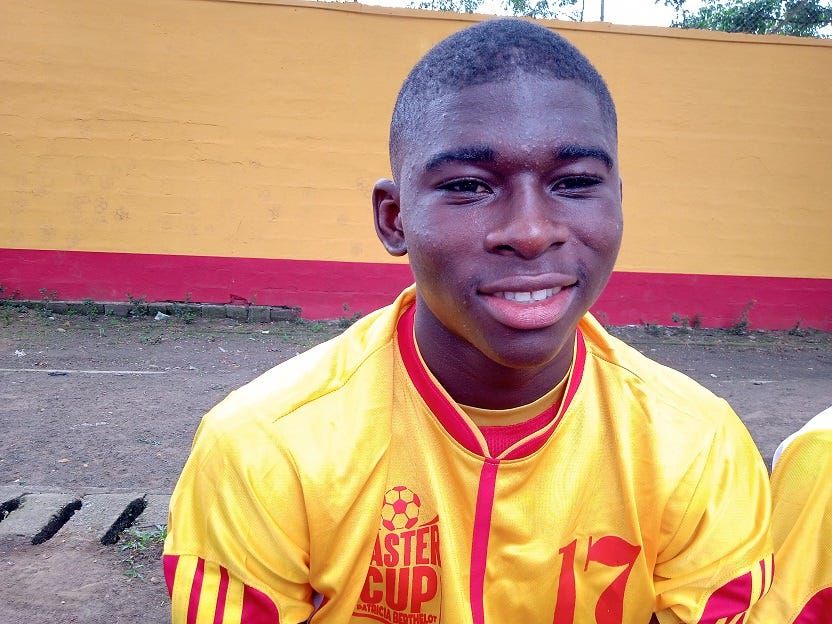
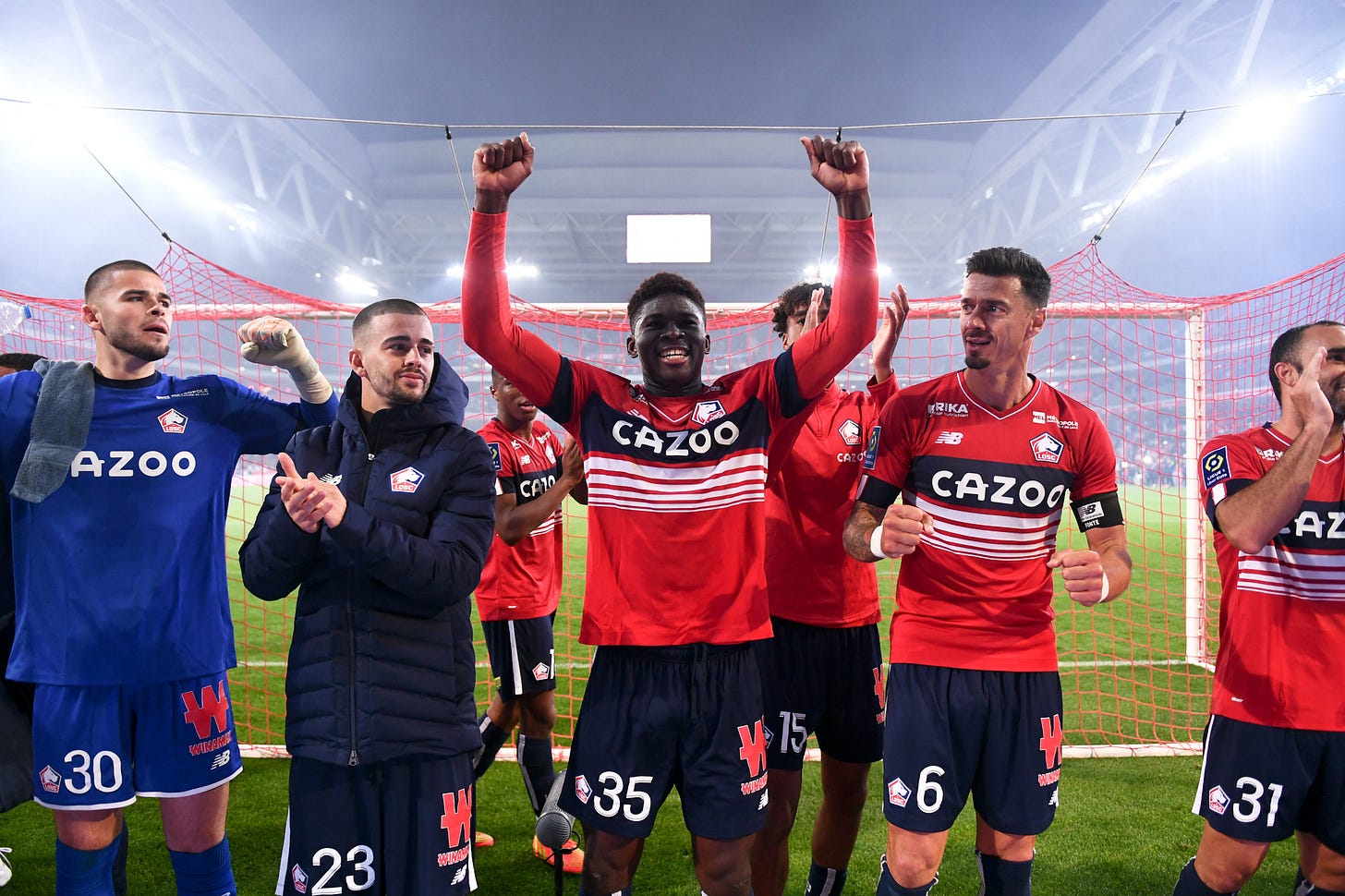



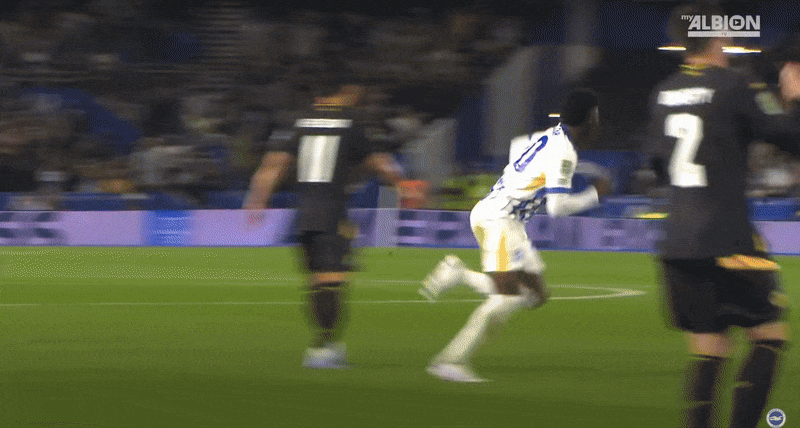
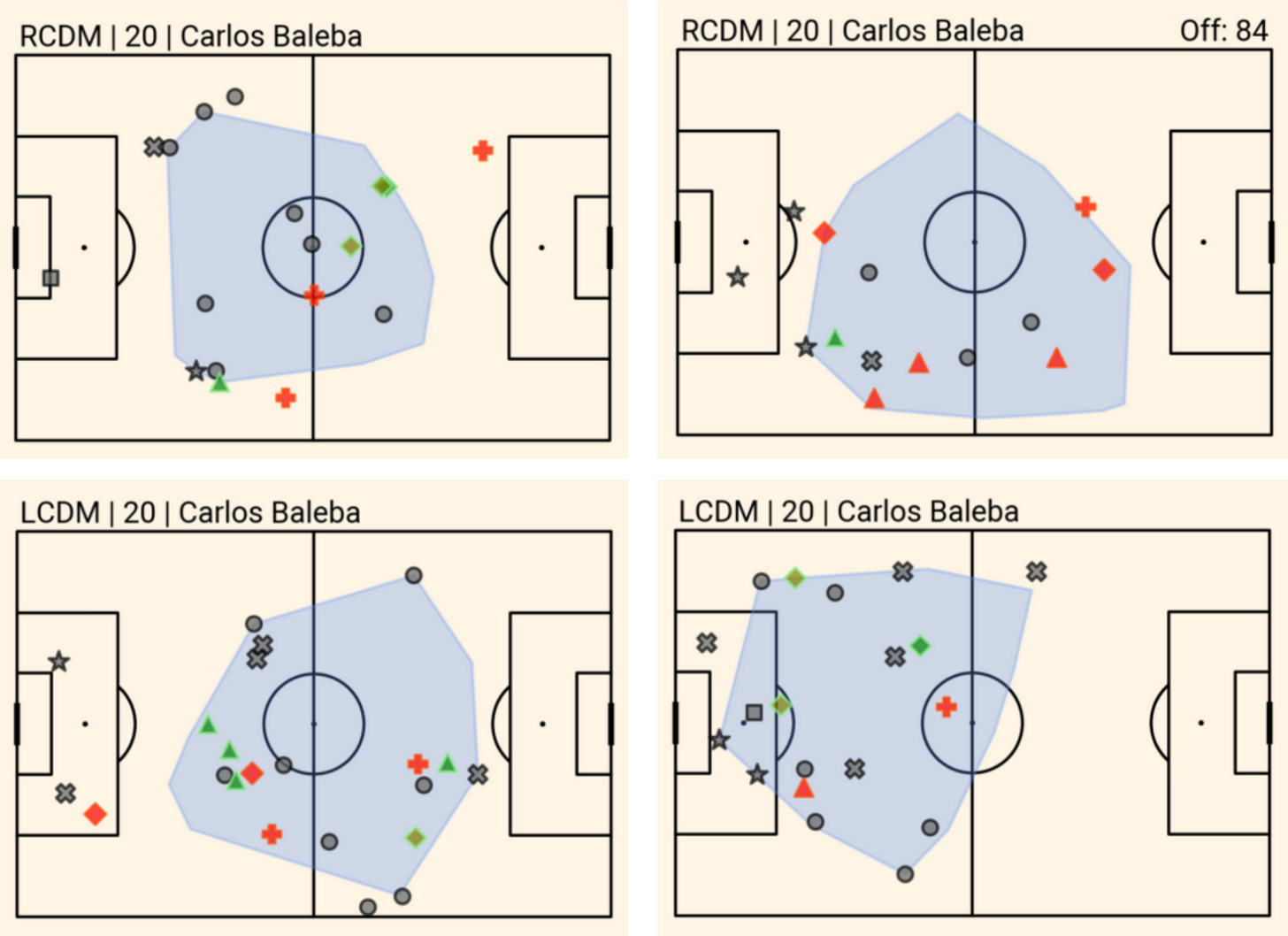






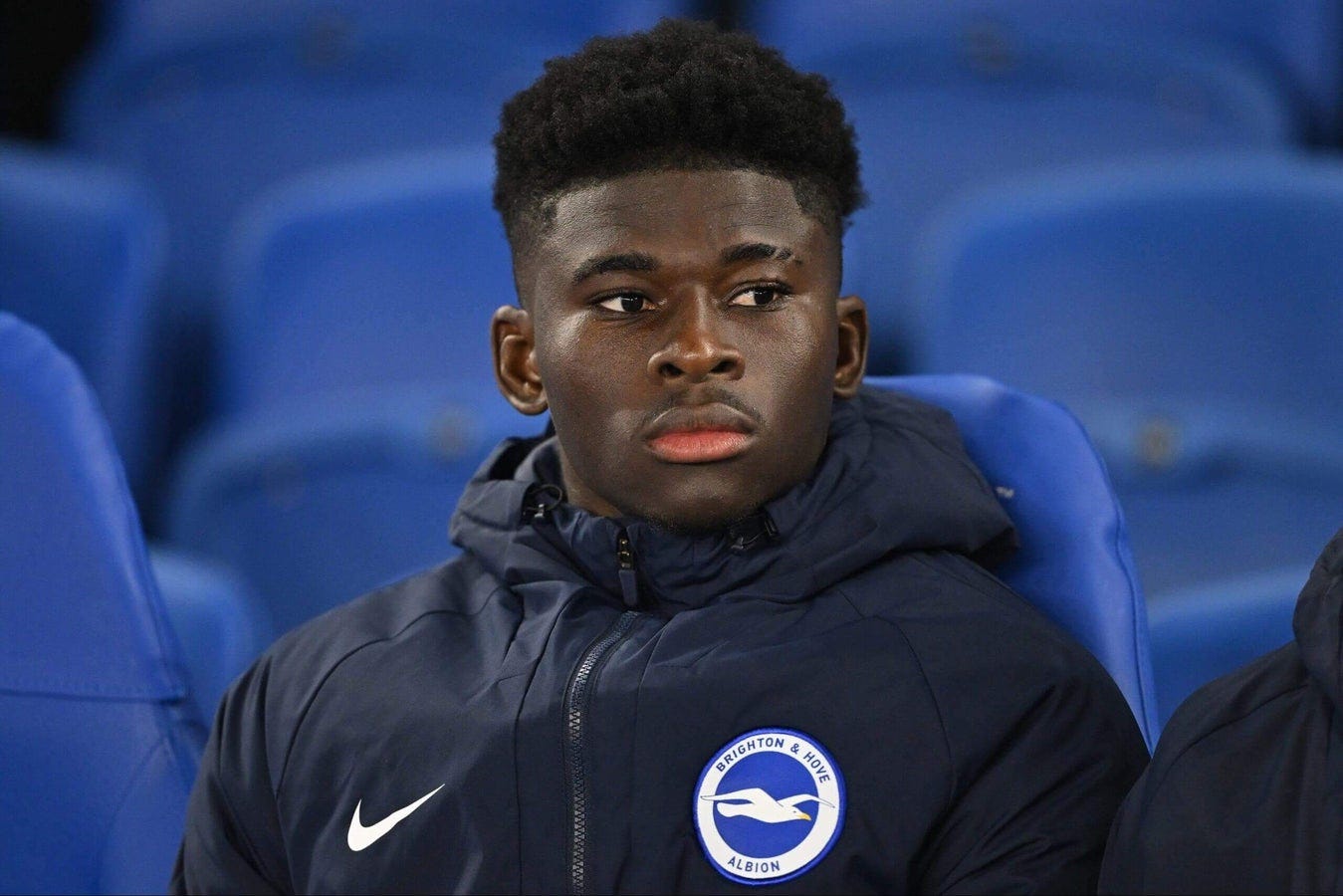
Very nice to read, hope to see him this or next summer in a Man Utd shirt 😍
Beautiful piece! He would be a transformation for Man Utd midfield!